GS25 Foundation Portfolio 2011
Friday, 15 April 2011
Friday, 8 April 2011
Evaluation
In what ways does your media product use, develop or challenge forms and conventions of real media products?
One of the ways we challenged the conventional codes of the thriller genre was by the gender of the victim. We used a male, which challenges the old convention of some thrillers, such as Psycho (Alfred Hitchcock, 1960), where the victims are generally female and portrayed as helpless and their only hope of safety comes in the form of a male hero, ready to “dash to their rescue”.
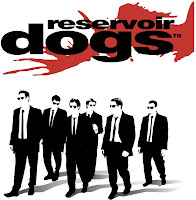 An example of how we used the conventions of real media products would be the classic convention of the thriller form which is the use of antagonists and protagonists. This theme runs through most thrillers, like Reservoir Dogs (Quentin Tarantino, 1992), for example, where there are definite antagonists and protagonists - Mr. Blonde, a psychotic thief, and Mr. Orange, the undercover cop who we follow through the narrative. The villain of our piece is the man who callously makes himself a cup of coffee after murdering the victim, who we see walking up to the man’s house at the beginning of our opening sequence.
An example of how we used the conventions of real media products would be the classic convention of the thriller form which is the use of antagonists and protagonists. This theme runs through most thrillers, like Reservoir Dogs (Quentin Tarantino, 1992), for example, where there are definite antagonists and protagonists - Mr. Blonde, a psychotic thief, and Mr. Orange, the undercover cop who we follow through the narrative. The villain of our piece is the man who callously makes himself a cup of coffee after murdering the victim, who we see walking up to the man’s house at the beginning of our opening sequence.We also used a common convention of thriller opening sequences with our use of editing, it is very fast paced, like a lot of thriller opening sequences, such as, The Dark Knight (Christopher Nolan, 2008). There is also a crime of which the rest of the narrative be based off of. The use of narrative enigma during the opening sequence of thrillers was used in our opening sequence. The man walking towards the house could be seen as the villain, it is only until the very last shot that the audience realises that it was in fact the man inside the house that was the antagonist.
How does your media product represent particular social groups?
Our film presents the social group of youths. The people in the film are meant to be very late teens, early twenties and the language used by the villain; “Hi, come on in, man” shows our use of the language that this particular social group would use. The film portrays a member of this social group in a particularly bad light, as he is a calculated killer, but I believe this to simply be the commentary on how youths can be dysfunctional, and can get caught up in the fascination with crimes as bad as the murder of a person. This is a harsh, unavoidable fact. The difference with our character is that he decides to act out his fantasies. I imagined the rest of the film following our villain and protagonist around his daily life coping with his obvious mental instability. The victim of the piece is generally innocent and is friends with, or knows the villain, so our representation of this social group is not entirely a negative one. We also did not conform to the representations of "bad youth"; our characters do not look stereotypically violent, they look quite clean cut, which adds to the mystery of why the violence is occuring.
What kind of media institution might distribute your media product and why?
What kind of media institution might distribute your media product and why?

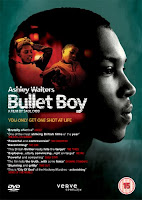 I think Columbia Pictures would distribute our media product, the reason being that they distributed a film about a psychotic ex-Vietnam veteran, called Taxi Driver (Martin Scorsese,1976). The film was not expected to be a success, and it was. This demonstrates that this institution is willing to take a chance with finances as long as they believe in the project. This is a very positive outlook to have as a media distribution as it gives their institution credibility in that they are involved with films of such a high quality. However, Columbia pictures might have changed since 1976 so I think another excellent idea for a media institution that might distribute our media product would be Verve Pictures http://www.vervepictures.co.uk/. This institution distributed Bullet Boy (Saul Dibb, 2005), a film about a family in East London torn apart coping with the eldest son’s association with gun crime. The theme of dysfunctional youths is evident in both this film and our media product. Also, Verve Pictures is an independent film company, the company statement being, “Verve Pictures is an independent UK specialist film distributor, with particular emphasis on British and independent films” which allows more room for artistic control which would suit the controversial subject matter of our thriller opening well.
I think Columbia Pictures would distribute our media product, the reason being that they distributed a film about a psychotic ex-Vietnam veteran, called Taxi Driver (Martin Scorsese,1976). The film was not expected to be a success, and it was. This demonstrates that this institution is willing to take a chance with finances as long as they believe in the project. This is a very positive outlook to have as a media distribution as it gives their institution credibility in that they are involved with films of such a high quality. However, Columbia pictures might have changed since 1976 so I think another excellent idea for a media institution that might distribute our media product would be Verve Pictures http://www.vervepictures.co.uk/. This institution distributed Bullet Boy (Saul Dibb, 2005), a film about a family in East London torn apart coping with the eldest son’s association with gun crime. The theme of dysfunctional youths is evident in both this film and our media product. Also, Verve Pictures is an independent film company, the company statement being, “Verve Pictures is an independent UK specialist film distributor, with particular emphasis on British and independent films” which allows more room for artistic control which would suit the controversial subject matter of our thriller opening well.Who would be the audience for your media product?
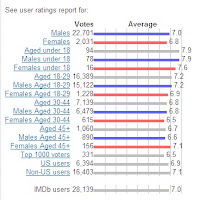 I think the audience for our media product would probably be younger people, in general, but more specifically, males in their teens to early twenties, mainly because the subject matter of our thriller would be more identifiable for people of this gender and age group. I know this from seeing the audience figures from similar films to ours, such as If... (Lindsay Anderson, 1968), which has its highest viewing figures from people aged 18-29, and then, more specifically, males aged 18-29. The same pattern can be seen with Harsh Times (David Ayer, 2006) which has the highest voting figures of 7.0 which come from males aged 18-29. The film deals with two friends, one with psychological problems, and the "violence that comes between them."
I think the audience for our media product would probably be younger people, in general, but more specifically, males in their teens to early twenties, mainly because the subject matter of our thriller would be more identifiable for people of this gender and age group. I know this from seeing the audience figures from similar films to ours, such as If... (Lindsay Anderson, 1968), which has its highest viewing figures from people aged 18-29, and then, more specifically, males aged 18-29. The same pattern can be seen with Harsh Times (David Ayer, 2006) which has the highest voting figures of 7.0 which come from males aged 18-29. The film deals with two friends, one with psychological problems, and the "violence that comes between them."I believe that the pace of our opening sequence and the fact there is a death in it would appear somewhat more to males. Also, the rest of the film would deal with a dysfunctional alienated teen, which would also appeal strongly to adolescent viewers as they could identify with it more.
How did you attract/address your audience?
One of the ways we made an effort to attract our audience was through the location of our thriller. We used a suburban house because this would be more identifiable to the male youth as this is something they are generally more familiar with. We made a conscious effort to put details into the film that are identifiable in everyday life, such as the everyday process of making a cup of coffee, or the location of the suburban house. We did this so that when the murder happens it is much more shocking and unsettling. We also addressed our audience by our idea of having a youth that is killing other youths. This is recognisable to our target audience because they are themselves mostly youths and can put themselves in the character’s positions, thoughts and emotions. The pan when the man walks through the gate up to the door achieves this. What is interesting is that the camera is always following our protagonist, as the audience is meant to empathise with him, and the antogonist is always presented with locked off, stationary shots, to detach the audience from him. The music that we used is very menacing and has a lurking presence, but despite this it is very alluring and mysterious, it attracts the audience in that they want to know more when they hear it. The idea of using turquoise coloured titles came from the opening title sequence in The Shining (Stanley Kubrick, 1980) http://www.youtube.com/watch?v=Iw23KM3-Ry8 and is meant to give a false sense of security as the colour is generally a happy, uplifting colour but in our thriller it gives a slightly off, unsettling feel.
What have you learnt about technologies from the process of constructing this product?
 I have learned many skills and techniques about technology that were used in the making of our media product. One is the process of keeping a shot as steady as possible. To do this I put the camera on the tripod, then held it horizontally out with my arm, and then moved my hand to find the centre of gravity. This ensured that when I came to shooting the final shot of our media product, the camera was as steady as possible. Another technique that we improved on was editing. We really challenged ourselves with the intercutting of the man making the cup of coffee with the other man cautiously approaching the house. It was extremely difficult to get the rhythm of the shots just right to build the tension before the man knocks on the door of the house. We were constantly replaying the shots in Sony Vegas and cutting and stretching shots to make sure the pace was just right. We also learned how to change the volume of our music at certain points in our film, such as when as when our character speaks, the volume of the music needs to drop so we can hear him. We also learned how to make titles unique and interesting. For our titles, we took a still shot of the paper, with the word "dead" written all over it, then superimposed the titles over it. We made the title of the film enlarge, while the shot of the paper was manipulated into a camera move in Sony Vegas. I also think that it has taught us that with the technological capabilities available today, anybody and everybody can make a film if they want to. I think this is a very positive aspect of new technology because it means budding young film makers have the opportunities to experiment with cameras and editing software.
I have learned many skills and techniques about technology that were used in the making of our media product. One is the process of keeping a shot as steady as possible. To do this I put the camera on the tripod, then held it horizontally out with my arm, and then moved my hand to find the centre of gravity. This ensured that when I came to shooting the final shot of our media product, the camera was as steady as possible. Another technique that we improved on was editing. We really challenged ourselves with the intercutting of the man making the cup of coffee with the other man cautiously approaching the house. It was extremely difficult to get the rhythm of the shots just right to build the tension before the man knocks on the door of the house. We were constantly replaying the shots in Sony Vegas and cutting and stretching shots to make sure the pace was just right. We also learned how to change the volume of our music at certain points in our film, such as when as when our character speaks, the volume of the music needs to drop so we can hear him. We also learned how to make titles unique and interesting. For our titles, we took a still shot of the paper, with the word "dead" written all over it, then superimposed the titles over it. We made the title of the film enlarge, while the shot of the paper was manipulated into a camera move in Sony Vegas. I also think that it has taught us that with the technological capabilities available today, anybody and everybody can make a film if they want to. I think this is a very positive aspect of new technology because it means budding young film makers have the opportunities to experiment with cameras and editing software.Looking back at your preliminary task, what do you feel you have learnt in the progression from it to the full product?
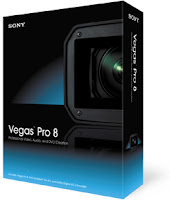
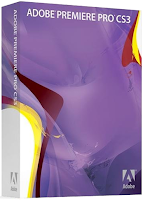 One of the main aspects of the entire film making process that I have learned is that preparation is the key to a good final product. With the preliminary task, not as much preparation was taken as there was with the thriller task, which really showed us that research into audience figures, props, locations and genre conventions really helps the production, post production and final outcome of the finished media product. I think we also learned out to give our product more of a defined storyline and plot development. Our editing also improved to the final full product, simply through practice. For the most part we used Sony Vegas for our editing, but during the final stages we used Adobe Premiere. I think it was a good thing to get experience of using two different pieces of editing software. Our preliminary task also used simple, straight cuts, while our final thriller product took advantage of dissolves, fades, flashes, and intercuts. But, overall, the process of filmmaking was developed, mastered and refined from our early fumblings in our preliminary task to our final media product.This was mainly because, with our preliminary task, we had a limited amount of time and did not really polish it off as thouroughly as we did with our thriller.
One of the main aspects of the entire film making process that I have learned is that preparation is the key to a good final product. With the preliminary task, not as much preparation was taken as there was with the thriller task, which really showed us that research into audience figures, props, locations and genre conventions really helps the production, post production and final outcome of the finished media product. I think we also learned out to give our product more of a defined storyline and plot development. Our editing also improved to the final full product, simply through practice. For the most part we used Sony Vegas for our editing, but during the final stages we used Adobe Premiere. I think it was a good thing to get experience of using two different pieces of editing software. Our preliminary task also used simple, straight cuts, while our final thriller product took advantage of dissolves, fades, flashes, and intercuts. But, overall, the process of filmmaking was developed, mastered and refined from our early fumblings in our preliminary task to our final media product.This was mainly because, with our preliminary task, we had a limited amount of time and did not really polish it off as thouroughly as we did with our thriller. Editing
After compiling our footage into Sony Vegas, me and Oliver worked on cutting the footage into a rough version of our opening sequence, focusing on the cross cutting between the colour and black and white sequences to get the pace just right to build the most tension. Zoran then focused on editing the titles into our opening sequence.
We made a cut from Oliver walking looking confused and intense straight to a shot of the boiled kettle. This cut builds the tension and implies that the boiling water is a representation of the murderer's volatile personality.
We made a cut from Oliver walking looking confused and intense straight to a shot of the boiled kettle. This cut builds the tension and implies that the boiling water is a representation of the murderer's volatile personality.
Another response we got from our rough cut was that there was too long a gap when the film fades to white. A lot of viewers thought the film was over, or their attention was lost. We then suggested the idea of splicing two flash ons of an image of a gun. This represents the murder which is occuring during these moments and also creates mystery within the audience.
For the shot of the gate closing, me and Oliver chose to cut to the next shot when the sound of the gate closing crashes. This connects the gate shot and the next in a good way because it resolves the first, so it goes seemlessly with the next. The sound also crescendos, just like at other points in the film, such as the end where the sound increases, then crashes to silence. We used this similar technique of the sound effect leading to the next shot, with the shot of the man placing his coffee mug on the worktop.
Overall, we learned a lot about editing making this opening sequence. I had some basic knowledge of editing but this task really put me to the test, and I anticipated it would with the complicated process of cross cutting.
Filming
First Shoot:
Me, Zoran and Oliver began our first and main shoot on a Tuesday when we were all free. Zoran helped me with some of the shots but I filmed the bulk of the shots which contain Oliver, and he filmed the scenes which I am in, however I filmed the final shot. We were always making sure that the framing and steadiness of the shots was as impeccable as possible. Using our storyboard as our guide, we achieved a certain shot and then ticked it off on our storyboard sheets. We went along doing this until we had completed filming. It took roughly about two hours to shoot the shots we needed. We all preferred the quick, sponateous film making method as we felt quite confident with all the preparation we had made.
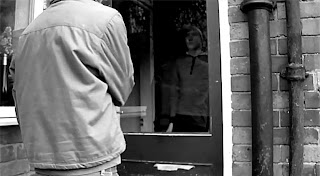 The main highlight of the shoot was achieving a shot that was not really planned at all but one that we took advantage of when we relaised its potential. It is the shot where Oliver is stood, waiting at the door for an answer. We knew his reflection could be seen in the door window and Oliver had the idea of me, answering the door, and stepping into the reflection from behind the glass. I thought it gave the antagonist of our thriller a creepy, menacing side. On another note, it might be a subtle suggestion on a second viewing of the film, that this character is distinguishing his victim's reflection just before he finally distinguishes his life.
The main highlight of the shoot was achieving a shot that was not really planned at all but one that we took advantage of when we relaised its potential. It is the shot where Oliver is stood, waiting at the door for an answer. We knew his reflection could be seen in the door window and Oliver had the idea of me, answering the door, and stepping into the reflection from behind the glass. I thought it gave the antagonist of our thriller a creepy, menacing side. On another note, it might be a subtle suggestion on a second viewing of the film, that this character is distinguishing his victim's reflection just before he finally distinguishes his life.
Me, Zoran and Oliver began our first and main shoot on a Tuesday when we were all free. Zoran helped me with some of the shots but I filmed the bulk of the shots which contain Oliver, and he filmed the scenes which I am in, however I filmed the final shot. We were always making sure that the framing and steadiness of the shots was as impeccable as possible. Using our storyboard as our guide, we achieved a certain shot and then ticked it off on our storyboard sheets. We went along doing this until we had completed filming. It took roughly about two hours to shoot the shots we needed. We all preferred the quick, sponateous film making method as we felt quite confident with all the preparation we had made.
 The main highlight of the shoot was achieving a shot that was not really planned at all but one that we took advantage of when we relaised its potential. It is the shot where Oliver is stood, waiting at the door for an answer. We knew his reflection could be seen in the door window and Oliver had the idea of me, answering the door, and stepping into the reflection from behind the glass. I thought it gave the antagonist of our thriller a creepy, menacing side. On another note, it might be a subtle suggestion on a second viewing of the film, that this character is distinguishing his victim's reflection just before he finally distinguishes his life.
The main highlight of the shoot was achieving a shot that was not really planned at all but one that we took advantage of when we relaised its potential. It is the shot where Oliver is stood, waiting at the door for an answer. We knew his reflection could be seen in the door window and Oliver had the idea of me, answering the door, and stepping into the reflection from behind the glass. I thought it gave the antagonist of our thriller a creepy, menacing side. On another note, it might be a subtle suggestion on a second viewing of the film, that this character is distinguishing his victim's reflection just before he finally distinguishes his life.Re-shoot:
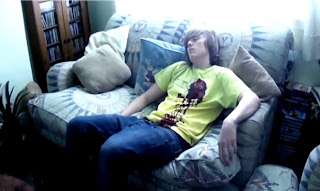 Reshooting the final shot was an effective way of killing two birds with one stone, in that we would correct the shaky camera, and add blood into the shot. It was decided that me and Oliver would film the reshoot as Zoran was not available at that time. We used red food colouring on Oliver's t-shirt and ketchup to give the blood a thick look. One of the main reasons the original shot was shaky was because the battery was low and were rushing to get the shot done before it died. With this in mind on the day of the re-shoot, I brought my fully charged camera, and secured it tightly to the tripod, to ensure no accidental camera shake. Oliver got in his position on the sofa, and I began to film the final shot again, concentrating most on keeping the camera as smooth as possible. It took a few tries, but we eventually achieved a shot we were both quite pleased with. When I put this shot into Sony Vegas to replace the orignal shot, I had to change the colour correction on the shot to give it as close a resemblance to the original shots as possible.
Reshooting the final shot was an effective way of killing two birds with one stone, in that we would correct the shaky camera, and add blood into the shot. It was decided that me and Oliver would film the reshoot as Zoran was not available at that time. We used red food colouring on Oliver's t-shirt and ketchup to give the blood a thick look. One of the main reasons the original shot was shaky was because the battery was low and were rushing to get the shot done before it died. With this in mind on the day of the re-shoot, I brought my fully charged camera, and secured it tightly to the tripod, to ensure no accidental camera shake. Oliver got in his position on the sofa, and I began to film the final shot again, concentrating most on keeping the camera as smooth as possible. It took a few tries, but we eventually achieved a shot we were both quite pleased with. When I put this shot into Sony Vegas to replace the orignal shot, I had to change the colour correction on the shot to give it as close a resemblance to the original shots as possible.
The one and only reshoot we did was based on some audience responses that we got back from people seeing a rough cut of out film. Some people said they really liked the "lurking presence" of the shot at the end of the film, but felt that the end of the shot, where the body of the man is revealed lying dead on the sofa, is too shaky. We all had to agree and felt that this was one shot that it was essential to re-shoot. Some other critical feedback mentioned that it was not really clear that the man was dead, and that they would have liked to have seen more blood to confirm this.
 Reshooting the final shot was an effective way of killing two birds with one stone, in that we would correct the shaky camera, and add blood into the shot. It was decided that me and Oliver would film the reshoot as Zoran was not available at that time. We used red food colouring on Oliver's t-shirt and ketchup to give the blood a thick look. One of the main reasons the original shot was shaky was because the battery was low and were rushing to get the shot done before it died. With this in mind on the day of the re-shoot, I brought my fully charged camera, and secured it tightly to the tripod, to ensure no accidental camera shake. Oliver got in his position on the sofa, and I began to film the final shot again, concentrating most on keeping the camera as smooth as possible. It took a few tries, but we eventually achieved a shot we were both quite pleased with. When I put this shot into Sony Vegas to replace the orignal shot, I had to change the colour correction on the shot to give it as close a resemblance to the original shots as possible.
Reshooting the final shot was an effective way of killing two birds with one stone, in that we would correct the shaky camera, and add blood into the shot. It was decided that me and Oliver would film the reshoot as Zoran was not available at that time. We used red food colouring on Oliver's t-shirt and ketchup to give the blood a thick look. One of the main reasons the original shot was shaky was because the battery was low and were rushing to get the shot done before it died. With this in mind on the day of the re-shoot, I brought my fully charged camera, and secured it tightly to the tripod, to ensure no accidental camera shake. Oliver got in his position on the sofa, and I began to film the final shot again, concentrating most on keeping the camera as smooth as possible. It took a few tries, but we eventually achieved a shot we were both quite pleased with. When I put this shot into Sony Vegas to replace the orignal shot, I had to change the colour correction on the shot to give it as close a resemblance to the original shots as possible.Also worth mentioning, is the fact that we changed the prop of the gun. When we came to the re-shoot, we could not find the gun we used in the original footage, so we had to use another one that we could find. To the left is the gun that we eventually used.
Friday, 1 April 2011
Music
We discovered a website, where you can download royalty free music, free of charge, called Jamendo.com: http://www.jamendo.com/en/.
We searched "soundtrack" and looked through some of the music on there to see which would suit our film the best. We decided on a piece by musician Daniel Catarino, on his album "O Rio e o Moleiro", called "Lia e o Moleiro". We thought this would be a very good track to use as the music builds up and is very menacing and represents the nature of the character within the house and foreshadows the death that is to come.
It then came to editing the music into our opening sequence. We used Adobe Premiere to change decrease the volume of the music at certain stages, for example, when there is dialogue. I also made the music audio rise at the end, when the title of the film, "Invite" appears, then crescendo to silence. This gives an eerie, lurking presence to the music.
We searched "soundtrack" and looked through some of the music on there to see which would suit our film the best. We decided on a piece by musician Daniel Catarino, on his album "O Rio e o Moleiro", called "Lia e o Moleiro". We thought this would be a very good track to use as the music builds up and is very menacing and represents the nature of the character within the house and foreshadows the death that is to come.
Monday, 21 March 2011
Rough Cut Feedback
Our feedback for our rough cut was generally positive, recieving comments praising the final long shot at the end and the credits at the end which were superimposed over a piece of paper which says 'dead' over it repeatedly. The issue of no non-diegetic sound came up repeatedly. We had always intended to do this, but is good to know the importance of adding this to our thriller.
Thursday, 10 March 2011
Locations
The main location of the film is the path outside the house and the interior inside of it. We are going to use Oliver's Dad's house for both of them.
Gate:
The gate that the man walks through in one of the opening shots, is very eerie and Gothic-styled. This fits in very well with the mysterious stages of the beginning of the thriller.
Alley:
There is also an alley leading up to the front door. The house looks very antiquated which is why we wanted to shoot the film here because it gives an eerie, mysterious quality that the character is experiencing, to the film.
Kitchen:
This is the kitchen and in Oliver's house. This is a perfect spot for the final shot, which has the camera slowly moving down the hall into the lounge.
Lounge:
This is how the end of the final shot will look, with the murdered figure lying dead on the sofa at the far end of the lounge.
Gate:
The gate that the man walks through in one of the opening shots, is very eerie and Gothic-styled. This fits in very well with the mysterious stages of the beginning of the thriller.
Alley:
There is also an alley leading up to the front door. The house looks very antiquated which is why we wanted to shoot the film here because it gives an eerie, mysterious quality that the character is experiencing, to the film.
Kitchen:
This is the kitchen and in Oliver's house. This is a perfect spot for the final shot, which has the camera slowly moving down the hall into the lounge.
Lounge:
This is how the end of the final shot will look, with the murdered figure lying dead on the sofa at the far end of the lounge.
Final Storyboard
This is the final version of my storyboard. As you can see I have added the insert shot of the kettle at the very beginning of the film. I have also noted that the title of the film will appear at the end of the opening sequence. I have decided to call the film "Hired Help" because the continuing story would reveal that the man has been hired to murder the man, and that the villain of the piece is, in fact, the 'hired help'.
I have noted at the top of the page, which shots will be in colour and which will be in black & white.
Wednesday, 9 March 2011
Audience Questionaire
I asked thirty of my friends and family to complete this questionaire and below are the results. An audience questionaire will give me a greater understanding of what I should and should not include in my thriller, and general guidlines in regard of character, plot, story and mood.
Note: This quesitonaire was conducted after the drawing up of the intial storyboard to see whether we would have to change anything for the final storyboard.
1.) Are you male or female?
As you can see, a higher percentage (63%) of males answered my questionaire. It is merely chance that I could find more males than females, but it does give me a better idea of what my target audence, who are predominantly males, would like to see in my Thriller.
2.) Which age group do you fall under?
This chart shows that the majority of the people (60%) that completed the questionaire fell under the age bracket of 16-21. This is most likely because I asked more of my friends, who are my age, than people older than me. I do not think this will affect the results as my target audience for my Thriller is teenage males.
3.) Do you prefer the Thrillers you watch to be in colour or black & white?
 The results show that the people I questioned would want neither just colour or just black and white but a combination of both. This coincides well with my idea to shoot part of my thriller in black & white and colour to show two different passages of time. This technique was also used in Christopher Nolan's thriller "Memento".
The results show that the people I questioned would want neither just colour or just black and white but a combination of both. This coincides well with my idea to shoot part of my thriller in black & white and colour to show two different passages of time. This technique was also used in Christopher Nolan's thriller "Memento".4.) How much dialogue would you like there to be in the opening of our thriller?
 The response to this question gave a majority of 56% in favour there being not very much dialogue in the opening sequence of my thriller. I like this response because I believe the less dialogue, and the less information that is revealed throughout the opening, the more ambiguous and mysterious the thriller will become.
The response to this question gave a majority of 56% in favour there being not very much dialogue in the opening sequence of my thriller. I like this response because I believe the less dialogue, and the less information that is revealed throughout the opening, the more ambiguous and mysterious the thriller will become.5.) What weapon would you prefer to include in our thriller?
6.) How fast would you like the editing to be?
The response showed that the majority (46%) would like fast paced editing in the opening sequence of our thriller. This was the result I was expecting, quite frankly, as it is a common code of thrillers for them to have fast paced editing and this has become the common expectation for them.
7.) When would you prefer the title of the film to appear?
The end of the film was the time most popular to have the title of the film appear. We will put this into effect in our thriller.
8.) Would you want the costumes for the characters to be smart or casual?
I am glad I got this response as it coincides with my story which has characters who would be in casual clothes. The use of casual costume also fits well with the convention of thrillers, in that everyday scenarios play out with brutal twists.
9.) Would you prefer the victim to be a male or a female?
 I was pleased with this response because we do want to break conventions within our thriller, and the convention of the female being the victim and damsel in distress is one that has always annoyed me. I am glad to be breaking the codes and conventions of the thriller genre and keeping the victim as a male.
I was pleased with this response because we do want to break conventions within our thriller, and the convention of the female being the victim and damsel in distress is one that has always annoyed me. I am glad to be breaking the codes and conventions of the thriller genre and keeping the victim as a male.10.) Would you want the acting to be more subtle than exaggerated?
Acting is an important part of the opening sequence of my thriller so I wanted to find out some sense of what my audience wanted. I'm glad that subtle acting was favoured more than exaggerated because my research on thrillers told me that less is more, and underplaying the acting will have more of an impact.
Monday, 7 March 2011
Risk Assessment
The safety of the cast and crew of our thriller is paramount. To ensure that this is the case, we will have to be very careful when handling our props, the equipment and make sure we are generally safe in the locations we are filming in.
Risk:
During filming, the camera could be dropped and damaged.
Who/What is the risk?
The camera.
How can I prevent the risk?
I will make sure that when the camera is on the tripod, it will always be securely screwed on to ensure that it does not fall off and break, and we could lose valuable footage. When the tripod is not being used with the camera, I will hold it firmly in by hands and make it my priority to make sure I do not drop it. When the camera is not in use at all I will keep it in the case that came with it to ensure it does not get damaged.
Risk:
Tripping whilst filming the scene in the alley way.
Who/What is the risk?
Me who will be filming the scene.
How can I prevent the risk?
Make sure Zoran is behind me while I walk backwards with the camera to ensure I do not trip and fall over.
Risk:
Breaking the mug whilst filming.
Who/What is the risk?
The mug.
How can I prevent the risk?
We have identical mugs so it will not be too much of a disaster if we do break one. However, if we do break a mug it could injure someone on the cast and crew so we will be very careful that the mug is never left too close to the end of the worktop.
Risk:
Burning himself on the hot water from the kettle.
Who/What is the risk?
Cast/Crew.
How can I prevent this risk?
We must ensure we are very careful when handling the kettle, but if the unlikely happens, we are right next to a sink so we can use the cold water from the tap to treat the burns.
Sunday, 27 February 2011
Props
The props that I will use need to create the perfect mood and are very important to the mise en scene of the opening sequence.
Kettle
 As the man is making a cup of coffee, we thought it would be interesting and somewhat necessary to include a kettle within the scene. As we are going to be shooting in Oliver's dad's kitchen, a kettle will not be hard to come by.
As the man is making a cup of coffee, we thought it would be interesting and somewhat necessary to include a kettle within the scene. As we are going to be shooting in Oliver's dad's kitchen, a kettle will not be hard to come by.
Mug
Gun
The people who completed my questionaire thought that a gun would be the most perfect and classic prop to be used within a thriller. Also the shot at the end, which starts on the gun and ends with the shot of the dead character of Man 1, demonstrates to the audience that the man has been killed by Man 1.
Originally, I had intended to use a BB gun with a silencer, to imply that he could murder someone in his own house and not have people hear the loud gunshot. However, we discovered that we could not find this prop, so settled on the fact that the film is clearly shot in a suburban area, so a loud gunshot could be mistaken for a car backfiring etc.
Credits
The background on which the title of the thriller will be superimposed on has an interesting story. Oliver's father is a teaching assistant and he deals with children who have psychological problems. When he assigned a student in Year 4 to write a short story, he repeatedly wrote the word 'dead' on 3 sides of paper. I thought this was very disturbing.
I think this would be interesting to include in our thriller as it would show the psychotic nature of the character of Man 2. It also reminded me of a scene within the Horror/Thriller classic 'The Shining' (1980), where the character who we think has been writing a novel, has actually in fact been writing one phrase repeatedly over hundreds of sheets of paper.
Scene from 'The Shining' (1980): http://www.youtube.com/watch?v=oOBbJw0MLvk
Other props
We will need some milk, as the character is shown poring some into his coffee. This will not be hard to come by as we will be shooting in a kitchen. We also need a teaspoon and some coffee, and again this should not be hard to acquire.
Kettle
 As the man is making a cup of coffee, we thought it would be interesting and somewhat necessary to include a kettle within the scene. As we are going to be shooting in Oliver's dad's kitchen, a kettle will not be hard to come by.
As the man is making a cup of coffee, we thought it would be interesting and somewhat necessary to include a kettle within the scene. As we are going to be shooting in Oliver's dad's kitchen, a kettle will not be hard to come by. But the main reason the kettle is an important prop is because of the opening shot, of Man 2 flicking the switch on the kettle to boil the water - when the switch is flicked a red light comes on. The significance of red is danger and I used this very consciously.
The colour of the mug we will use has been thought out carefully. Because the opening sequence presents a character so deeply cut off from humanity that he could kill a man and then calmly make a cup of coffee, we have chosen a blue mug because it represents the cold-hearted nature of the character.
Gun
The people who completed my questionaire thought that a gun would be the most perfect and classic prop to be used within a thriller. Also the shot at the end, which starts on the gun and ends with the shot of the dead character of Man 1, demonstrates to the audience that the man has been killed by Man 1.
Originally, I had intended to use a BB gun with a silencer, to imply that he could murder someone in his own house and not have people hear the loud gunshot. However, we discovered that we could not find this prop, so settled on the fact that the film is clearly shot in a suburban area, so a loud gunshot could be mistaken for a car backfiring etc.
Credits
The background on which the title of the thriller will be superimposed on has an interesting story. Oliver's father is a teaching assistant and he deals with children who have psychological problems. When he assigned a student in Year 4 to write a short story, he repeatedly wrote the word 'dead' on 3 sides of paper. I thought this was very disturbing.
I think this would be interesting to include in our thriller as it would show the psychotic nature of the character of Man 2. It also reminded me of a scene within the Horror/Thriller classic 'The Shining' (1980), where the character who we think has been writing a novel, has actually in fact been writing one phrase repeatedly over hundreds of sheets of paper.
Scene from 'The Shining' (1980): http://www.youtube.com/watch?v=oOBbJw0MLvk
Other props
We will need some milk, as the character is shown poring some into his coffee. This will not be hard to come by as we will be shooting in a kitchen. We also need a teaspoon and some coffee, and again this should not be hard to acquire.
Cast for Opening Sequence
Casting is one of the most important processes within film making as the characters are often the driving force within the narrative. Our opening sequence of a thriller will include two characters, so I will be able to focus my efforts on casting more because of the minimal characters.
Character: Youth 1
Actor: Oliver Morroll
The first character I will be casting will be the character we see the most in the opening sequence. That is the character of the man walking up toward the house and knocking on the door, who I will call "Youth 1" as both characters names are never disclosed.
Oliver is perfect for the role as it takes some acting experience, which he has in abundance, having acted in a lot of short films we have made. We entered the George Spencer School Film Competition twice between 2008-2009, coming third in the first and second in the last, consistently being the only ones coming in the top three within those two years of the competition.
This the film in which we came second, 'Picture This' (2009) and shows some of his limited, but effective acting talents: http://www.youtube.com/watch?v=iLIVtP0voeY
Character: Youth 2
Actor: Jonathan Hawes
I do not have a lot of experience in acting but having directed a number of short films and I thought I could put my experience of the direction of others into my own performace.
Saturday, 26 February 2011
Rough Storyboard
This is the rough outline of my storyboard. I felt doing a rough sketch would help with my understanding of the plot, the characters, but especially the editing of the piece, as the success of the film depends largely on the pacing and the building of the tension.
This rough sketch shows the film opening with the man, who is approaching the house, opening the gate, and walking through it. I will later change the opening shot to an insert of the switch on the kettle being flicked on, to boil the water.
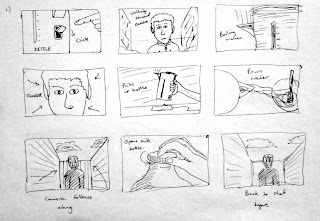
The first frame, shows that I intend to use the shot of the kettle switch as the first shot. The storyboard then continues from where the last page ended.
I intend to build the tension by starting on a medium shot of the man walking, which then cuts to a shot of the boiled kettle, then back to a close up of the walking man. This change from a medium shot, to a close up intensifies the scene and builds the tension.
The final stages of this storyboard shows the man reaching the doorway, intercut with the finishing of the making of the coffee. As the man knocks on the door, a figure appears and ask if the man would like some coffee. The shot then cuts to black for about 3-5 seconds to build the tension.
This black screen is also symbolic of the killing of the man. It also implies on the second viewing that the reason the audience are being given nothing in the way of image and sound is because this builds the tension; as humans in general are fearful of that which they cannot not fully understand or comprehend.
The final shot will be a challenge, also, as it is one long starting from the gun on the worktop all the way into the next room to reveal the dead man. Long takes are a technique I admire from thrillers, such as 'Goodfellas' (1990) and 'Reservoir Dogs' (1992) and are often used to reveal something about the character or the plot. In 'Goodfellas' (1990), the shot of Henry Hill entering the Copa Cobana shows his power and success and the entering into the glitsy, glamourous world of a gangster. The long take in 'Reservoir Dogs' (1992) which shows a bank robber walking from a warehouse, in which he is torchering a kidnapped police officer, outside to his car and back again juxtaposes the unbeliavable, larger-than-life events that are occuring in the warehouse and the mundane peacefullness of suburban life outside of it.
My film will incorporate the idea of showing that while something everyday and ordinary could be happening in one room, something terrifying and violent could be occuring in the next. Which is why I will juxtapose the shot of a man drinking his coffee, with a dead body in the next room.
The long take from Goodfellas (1990):
http://www.youtube.com/watch?v=e8DPiHCtQCw&feature=related
The long take from Reservoir Dogs (1992):
[shot begins at 2:58]
http://www.youtube.com/watch?v=komvFIGYBYM&feature=related
This rough sketch shows the film opening with the man, who is approaching the house, opening the gate, and walking through it. I will later change the opening shot to an insert of the switch on the kettle being flicked on, to boil the water.
Overall, this demonstrates that the idea of intercutting between the two actions is still firmly in place.

The first frame, shows that I intend to use the shot of the kettle switch as the first shot. The storyboard then continues from where the last page ended.
I intend to build the tension by starting on a medium shot of the man walking, which then cuts to a shot of the boiled kettle, then back to a close up of the walking man. This change from a medium shot, to a close up intensifies the scene and builds the tension.
The final stages of this storyboard shows the man reaching the doorway, intercut with the finishing of the making of the coffee. As the man knocks on the door, a figure appears and ask if the man would like some coffee. The shot then cuts to black for about 3-5 seconds to build the tension.
This black screen is also symbolic of the killing of the man. It also implies on the second viewing that the reason the audience are being given nothing in the way of image and sound is because this builds the tension; as humans in general are fearful of that which they cannot not fully understand or comprehend.
The final shot will be a challenge, also, as it is one long starting from the gun on the worktop all the way into the next room to reveal the dead man. Long takes are a technique I admire from thrillers, such as 'Goodfellas' (1990) and 'Reservoir Dogs' (1992) and are often used to reveal something about the character or the plot. In 'Goodfellas' (1990), the shot of Henry Hill entering the Copa Cobana shows his power and success and the entering into the glitsy, glamourous world of a gangster. The long take in 'Reservoir Dogs' (1992) which shows a bank robber walking from a warehouse, in which he is torchering a kidnapped police officer, outside to his car and back again juxtaposes the unbeliavable, larger-than-life events that are occuring in the warehouse and the mundane peacefullness of suburban life outside of it.
My film will incorporate the idea of showing that while something everyday and ordinary could be happening in one room, something terrifying and violent could be occuring in the next. Which is why I will juxtapose the shot of a man drinking his coffee, with a dead body in the next room.
The long take from Goodfellas (1990):
http://www.youtube.com/watch?v=e8DPiHCtQCw&feature=related
The long take from Reservoir Dogs (1992):
[shot begins at 2:58]
http://www.youtube.com/watch?v=komvFIGYBYM&feature=related
Mind Map
This lesson allowed us as a group to organise our ideas for the opening of a thriller. We outlined the basic idea: a man casually makes a cup of coffee, and the camera slowly tracks into the next room to reveal the corpse of a man, lying dead on the sofa. This is shown on the right hand side of the page.
Oliver then expanded upon this idea (see left hand side of page) by suggesting this be intercut with footage of the man we see dead at the end of the film, walking to the house, up the drive and knocking on the door, where he is then greeted by his killer. We have decided this will be our final idea.
I will now assemble a rough storyboard. The reason I will be making a rough storyboard, is one: so I can organise my thoughts, and two: so I can plan the pacing and cutting of the shots.
Thriller Conventions
To replicate the opening two minutes of a thriller, I will have to have knowlege of the codes and conventions of the thriller genre.
List of conventions for Thrillers:
- The takes are either very short to thrill the audience with the pace and excitement, or very long to build the suspense and expectation.
- They often include villains and victims. Villains are often the most important, however, as they push the plot forward. The victims are often of minor significance, there existence based only around there death within the film.
- The brutality of the events is often implied through the use of quick, fast paced cuts.
- The narrative is often mysterious, with varying twists and turns in the plot that keeps the audience guessing until the very end of the film.
- The narrative is often based around a crime of some sort, such as 'Psycho' (1960).
- The location or content of the scene can be recognisable to audience, but is then often turned on its head in a brutal fashion to unsettle the audience.
List of conventions for Thrillers:
- The takes are either very short to thrill the audience with the pace and excitement, or very long to build the suspense and expectation.
- They often include villains and victims. Villains are often the most important, however, as they push the plot forward. The victims are often of minor significance, there existence based only around there death within the film.
- The brutality of the events is often implied through the use of quick, fast paced cuts.
- The narrative is often mysterious, with varying twists and turns in the plot that keeps the audience guessing until the very end of the film.
- The narrative is often based around a crime of some sort, such as 'Psycho' (1960).
- The location or content of the scene can be recognisable to audience, but is then often turned on its head in a brutal fashion to unsettle the audience.
Friday, 18 February 2011
Target Audience - Thriller Genre
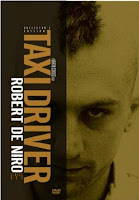 Different films within the thriller genre have different target audience and appeal to either a specific gender or age. From my research, I have discovered that it is mostly males that are the target audience for thrillers. However, that is not to say that females do not enjoy the genre. For the 1999 film "Fight Club", the IMDb's ratings show that males gave an average vote of 8.9/10, with females not far behind, rating it 8.7/10.
Different films within the thriller genre have different target audience and appeal to either a specific gender or age. From my research, I have discovered that it is mostly males that are the target audience for thrillers. However, that is not to say that females do not enjoy the genre. For the 1999 film "Fight Club", the IMDb's ratings show that males gave an average vote of 8.9/10, with females not far behind, rating it 8.7/10. 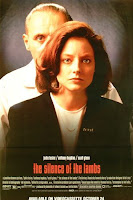 The votes for "Pulp Fiction" (1994) on IMDb show that the highest ratings are from males under 18, at 9.4/10. This implies that the thriller genre is primarily aimed at teenage males who are willing to be shocked with violence and gore. This can be proven with the votes for females aged 45+, which came to a significantly less rating of 8.3/10. Yet the males are still the predominant target of this age group, with the ratings for females aged 45+ coming to 7.6/10.
The votes for "Pulp Fiction" (1994) on IMDb show that the highest ratings are from males under 18, at 9.4/10. This implies that the thriller genre is primarily aimed at teenage males who are willing to be shocked with violence and gore. This can be proven with the votes for females aged 45+, which came to a significantly less rating of 8.3/10. Yet the males are still the predominant target of this age group, with the ratings for females aged 45+ coming to 7.6/10. The voting figures for the 1976 thriller "Taxi Driver" show that males have 125,036 votes, and females only have 12,775. This demonstrates that it is mainly males who have watched this film.
However, the thriller genre has sub genres which all target different audiences depending on age or gender. A film like "The Silence of the Lambs", which portrays the vulnerabilty and strength of a woman in a profession that has mostly male employees, the FBI. This realistic and modern portrayl of women defies the general concept that females sould be the damsels in distress and a challenge for the male characters to rescue. It also shows in the viewer ratings on IMDb that there is an equal vote of 8.7/10 between male and females.
Overall, thrillers are predominantly aimed at young males, but the sub genres, such as a horror/thriller (mostly aimed at teenage girls, e.g. Twilight) allows for females to enjoy this type of film as much as the teenage boy does.
Subscribe to:
Comments (Atom)


























